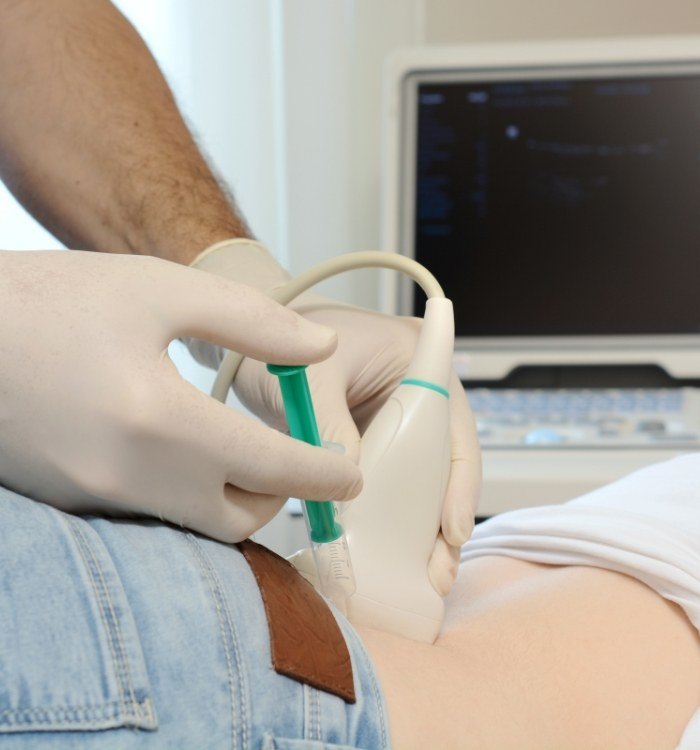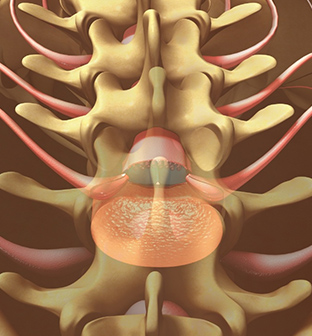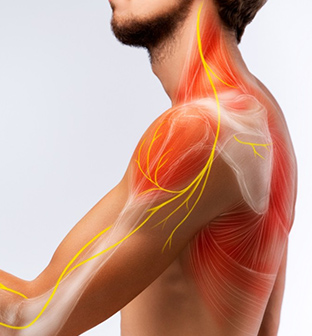
Non-Surgical Orthopedics – Asheville, NC
Live Your Life
Pain-Free
Non-surgical orthopedics is one of the fastest-growing fields in all of medicine. It combines a wide variety of techniques and treatments to help patients overcome pain and injury without relying on powerful drugs or invasive surgery. If you’re ready for your back to stop hurting, or if your knee never seems to heal, Dr. Pinkston will do his best to help you finally enjoy the relief you deserve with the goal of avoiding any operations or lifetime prescriptions. You can learn more about everything he provides below, and to see what he could do for you, contact us today to schedule a consultation to discuss non-surgical orthopedics in our Asheville, NC practice.
Why Choose Dr. James Pinkston for
Non-Surgical Orthopedic Treatments?
- Physician Specialized in Neuromusculoskeletal Medicine
- Treatments Provided with Ultrasound Guidance to Enhance Accuracy
- Multitude of Treatment Options Customized for Each Patient
Diagnostic Musculoskeletal
Ultrasound

While traditional X-rays are extremely useful, they aren’t always the best tool when it comes to finding and identifying problems in a patient’s soft tissue. Musculoskeletal ultrasound allows Dr. Pinkston to look below the surface and see a patient’s muscles, tendons, ligaments, and other structures, so he can determine exactly what is causing someone’s pain. This leads to a more accurate diagnosis and effective treatment.
Ultrasound-Guided
Injections

Many of the treatments used by Dr. Pinkston come in the form of an injection, whether it’s fat or bone marrow derived biologic cell therapy, prolotherapy, or PRP therapy. Many doctors do their injections completely “blind,” as in they do not use imaging to tell exactly where the needle is going in the body. To make sure an injection goes precisely where it is planned and to avoid critical anatomy that could lead to complications, Dr. Pinkston utilizes ultrasound guidance. He’s able to see the needle once it’s under the skin and make sure whatever healing substance he’s using goes directly into the injured tissue, leading to better and more predictable outcomes.
Learn More About Stellate Ganglion Blocks
Neuromusculoskeletal
Injections

Chronic pain and injuries often lead to inflammation, which is the root source of many musculoskeletal problems. Getting this inflammation under control and reducing it can be an extremely important step in a patient’s recovery. Localized injections of different therapeutic agents can help rapidly decrease pain and inflammation without many of the serious side effects that are associated with systemic medications. In many instances, these minimally invasive and cost-effective treatments can delay and even eliminate the need for surgical intervention. We offer a variety of neuromusculoskeletal injections including:

Corticosteroid Injections
Corticosteroids are potent anti-inflammatory compounds that can provide immediate relief lasting weeks to months depending on the cause and severity of one’s discomfort. These should be used sparingly and are an option for those suffering with severe pain while working towards a more permanent solution.

Viscosupplementation Treatment
Viscosupplementation is a type of injection aimed at reducing joint pain. It contains a synthetic, viscous, or gel-like fluid that serves as a supplement to normal joint fluid. This non-surgical treatment can assist in temporary relief of discomfort from osteoarthritis in the knee, and may be helpful in the other joints such as the hip. Patients who have not had success with physical therapy or pain relievers to increase their mobility could be viable candidates for viscosupplementation treatments. These treatments can provide pain relief from 3 month up to a year or longer.

Trigger Point/Tender Point Injections
Trigger point injections or tender point injections are performed by injecting a solution, which usually consists of lidocaine or another local anesthetic, directly into a muscle spasm or area of discomfort. This is done to break the pain cycle or to assist in muscle relaxation. Trigger points typically occur in a more restricted, regional pattern and can indicate myofascial pain syndrome. Tender points are areas of tenderness occurring in a more widespread manner, with similar characteristics similar to fibromyalgia. It is possible that the two conditions can exist in some patients with overlapping symptoms occurring.

Nerve Blocks
Also known as neural blockades, nerve blocks are designed to stop pain signals from reaching the brain. While these don’t help the body recover from an injury, they can deliver immediate pain relief, which can dramatically improve someone’s quality of life, while at the same time serving to help diagnose or more clearly define a problem area. They can be used to address pain felt in many areas of the body, and we have found them helpful in addressing many causes of discomfort. Dr. Pinkston is able to offer numerous types of nerve blocks so he can provide the ideal one for each patient and their specific issue.

Nerve Hydrodissection
The nerves often have to travel through muscles and other connective tissue in order to reach their final destination, and if the nearby tissue becomes constricted, swollen, or inflamed, this can lead to something called nerve entrapment. A patient may experience pain, numbness, and a loss of strength because the nerve in a certain part of the body is literally being squeezed, so it cannot function properly. A common example of this is Carpal Tunnel Syndrome. Nerve hydrodissection relieves pressure from a distressed nerve by coating it in a thin layer of fluid, which establishes a much-needed cushion, freeing up the nerve while stopping the pain and other associated symptoms.
Am I a Good Candidate for Non-Surgical Orthopedics?

Are you wondering if non-surgical orthopedic treatment is right for you? The only way to find out for sure is to visit us for a consultation. In the meantime, you can review the information below to get a general overview of the types of patients that usually find our treatments to be effective. Hopefully, you will soon be able to experience all the advantages of non-surgical orthopedics!
Who Is Most Eligible for Non-Surgical Orthopedics?

The people who benefit most from non-surgical orthopedics tend to:
- Have mild to moderate orthopedic problems. Our treatments are often highly beneficial for people who are suffering from overuse injuries, general aches and pains, trapped nerves, ligament tears, and more. Of course, if your condition is severe, we might determine that surgical intervention would be the best course of action.
- Are committed to complying with treatment instructions. There is much we can do in our office to relieve pain and get your body on the path to recovery. However, part of your results may depend on what you do on a daily basis. We may recommend that you undergo wellness counseling to power up your body’s ability to cope with orthopedic issues and improve your overall quality of life.
Reasons Patients Want to Avoid Surgery

Whenever possible, we strive to help patients with our non-surgical treatments rather than refer them to a surgeon. Our patients love this approach because they wish to avoid going under the knife for several reasons:
- It can take several weeks (or even months) to fully recover from surgery.
- While orthopedic surgeons strive to be very careful, there is always a risk that something will go wrong and complications will occur.
- Surgery can lead to lost work time, scarring, and other consequences that patients would prefer to avoid.
- Surgical procedures can be prohibitively expensive. Even with health insurance, some people end up paying thousands of dollars out of pocket.
The Benefits of Non-Surgical Orthopedics

The potential to avoid surgery is one of the most outstanding benefits of non-surgical orthopedics. Additional advantages include:
- Reduced pain. In many cases, we are able to provide quick pain relief. At the same time, we may recommend more extended treatments that can heal the body and offer permanent results.
- Improved quality of life. When you are pain-free and have increased mobility, you may enjoy improved emotional health, an increased ability to enjoy healthful exercises, and a more active overall lifestyle.
- Minimal recovery time. Most non-surgical orthopedic treatments require little to no downtime, so your daily routine will be disrupted as minimally as possible.
- Customized to each patient. Every case is unique, so Dr. Pinkston and our team always take the time to carefully evaluate each individual’s needs. This approach enables us to design a custom treatment plan that considers your unique situation.
Do you believe non-surgical orthopedics might be right for you? Contact our office today to book a consultation.
Non-Surgical Orthopedics FAQs

Dr. Pinkston and our team would love to help you recover from injuries and get back to feeling your best. Before your consultation, though, we understand if you want to gather more information about our services and what you can expect when you visit us. Take a look at the following list of FAQs to discover some important information. If your questions are not addressed here, give us a call — we are eager to speak with you!
Can You Help Me Avoid Surgery?
We understand that many patients are eager to avoid the risks and long recovery time that often accompany an invasive surgery. That is why we do our best to help patients recover without invasive procedures. After a thorough evaluation of your condition, Dr. Pinkston will talk to you about your treatment options. If he believes you can see significant improvements with non-surgical therapy, you can look forward to a relatively easy experience.
In some cases, though, surgery is necessary. If that is true for you, you can be confident that you are doing the best thing for your health.
What Are Some of the Most Common Injuries That You Treat?
We are able to address many types of injuries and musculoskeletal conditions, such as sports injuries, osteoarthritis, carpel tunnel, overuse injuries, plantar fasciitis, and more. Dr. Pinkston has treated many cases and has the expertise necessary to help a wide variety of patients. If you do not see your specific problem discussed on our website, give us a call to find out if we can help you.
How Can I Prevent Injuries?
Although our team will be happy to help you when you are in pain, we are sure that you would prefer to prevent the need for our services! One of the best things you can do to keep your musculoskeletal system healthy is engage in regular exercise. Just be sure that you do not overexert yourself. You should also wear appropriate gear and learn proper techniques for whatever activity you choose to participate in.
Weight management can also play a role in helping your body stay healthy. Obesity is a significant risk factor for osteoarthritis. Additionally, living in a large body increases your risk of injury if you fall or trip.
Does Medical Insurance Cover Non-Surgical Orthopedics?
A few of our procedures are frequently covered by medical insurance, while most are not. You will have to check with your policy provider to see whether your plan will reduce your total financial obligation for any given service.
Our team does not currently participate in any insurance plans, but we can still help you use your benefits by providing you with a statement that you can submit to your insurance policy.
If you have concerns about being able to afford your treatment, let us know. You might be eligible for financing or other provisions that could make it easier for you to receive the care you need.